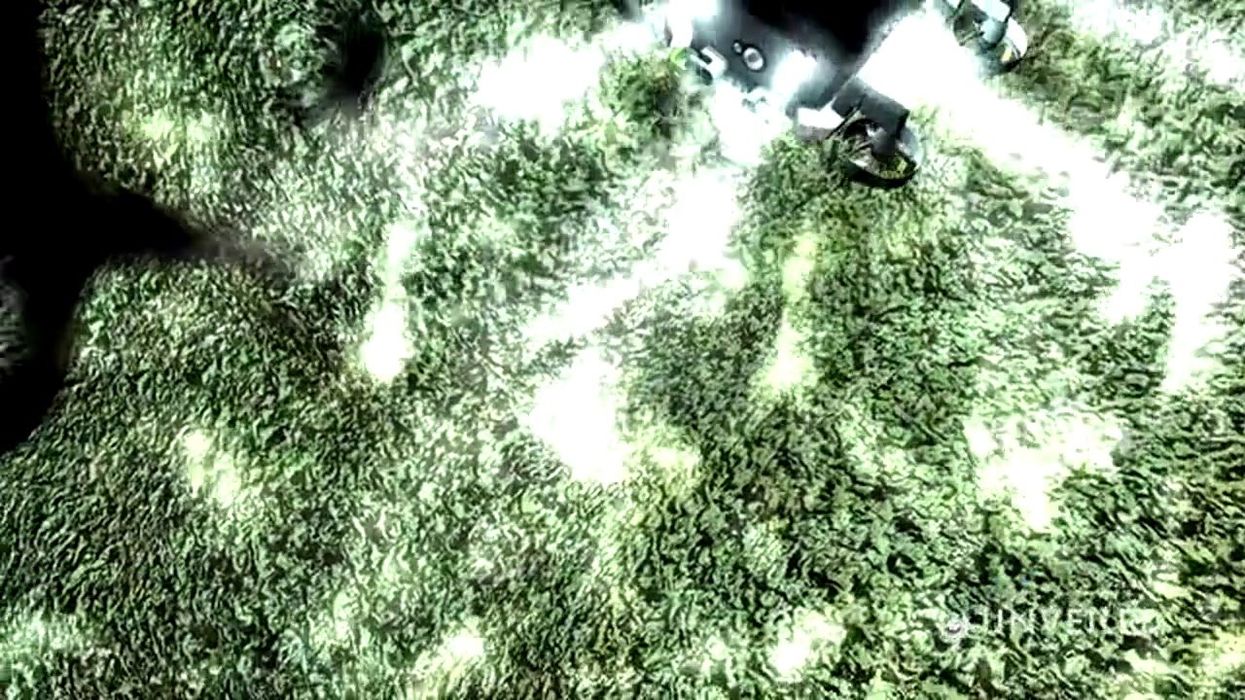Harriet Brewis
Apr 15, 2024
Why the Deepest Parts of the Ocean Remain a Mystery | Unveiled
WatchMojo / VideoElephant
The depths of the world’s oceans have been a source of legend, fascination and terror since time immemorial, and it isn’t hard to see why.
We know more about the surface of the Moon than about our own sea floors (so the maxim goes), with more than 80 per cent of the Earth’s oceans yet to be explored.
It should come as no surprise, therefore, that the waves give birth to countless phenomena that even the best-qualified scientists struggle to explain.
One such curiosity was identified on 1 March, 1999, when the National Oceanic and Atmospheric Administration (NOAA) picked up a mysterious sound down in the bowels of the eastern equatorial Pacific.
The recording was made using a range of hydrophones (microphones which detect sound waves underwater), spaced hundreds of kilometres apart.
It was sufficiently loud to be picked up across the entire region, and sounded eerily like a woman’s voice humming or mumbling.
This is why it came to be known by the female name “Julia”.
"Julia" Loud creepy sound from the oceanyoutu.be
The NOAA admitted that they couldn’t pin down exactly where the murmuring had come from – saying only that its point of origin could have been between Branfield Strait (a body of water that lies between the South Shetland Islands and the tip of the Antarctic Peninsula) and Cape Adare in east Antarctica.
Nor, at the time, could they offer a concrete explanation for what caused the rarity.
Inevitably, this uncertainty prompted a flurry of conspiracy theories, with misinformation swiftly spreading online.
Some netizens claimed that photos taken from a NASA spacecraft (which they identified as Apollo 3345) showed a large shadow in the water at the time the sound was recorded.
These theorists claimed that this mysterious shadow was twice as big as New York’s Empire State Building. And yet, they couldn’t offer proof of this because the pictures were “classified”.
Of course, rigorous online researchers swiftly pointed out that Apollo 3345 did not exist and the whole hypothesis was utterly unfounded.
Instead, the NOAA later concluded that the “most likely source of the sound” was a large iceberg that had run aground off Antarctica.
And, indeed, Julia is not the first such enigmatic sound to be captured in the world’s seas.
In 1997, a deep “bloooop” sound was detected somewhere off the coast of Chile – again, in the Pacific Ocean – and for years it was the loudest unidentified noise ever recorded underwater.
As with Julia, theories on its provenance abounded – with some suggesting it was the result of secret military exercises and others questioning whether it had emanated from a giant deep-sea creature.
The noise – which came to be known as the Bloop – undulated in frequency, making it somewhat reminiscent of whale noises, as Science Alert notes.
However, it was detected by hydrophones over a more than 5,000-kilometre range (around 3,100 miles). To travel that far, the sound would have had to be far louder than anything an underwater animal could produce, however big it may be.
It’s also worth noting that the Bloop sound with which most people are familiar has, in fact, been sped up. The unmodified recording is 16 times slower, which means it sounded more like rolling thunder than the roar of a giant octopus or other hypothetical beast.
The Bloop: A Mysterious Sound from the Deep Ocean | NOAA SOSUSwww.youtube.com
Furthermore, as NOAA researchers installed more hydrophones around Antarctica over the years, they became more and more convinced of the Bloop’s true origins.
And "it was there, on Earth's lonely southernmost land mass, that they finally discovered the source of those thunderous rumbles from the deep in 2005," a post on the NOAA website reveals.
"The Bloop was the sound of an icequake – an iceberg cracking and breaking away from an Antarctic glacier!"
More recently, new hydrophones have recorded similar noises to the Bloop and Julia in the southern ocean and the Atlantic, which have also been attributed to icequakes.
By 2012, seismologist Robert Dziak told WIRED that NOAA's hydrophones pick up tens of thousands of Bloop-like sounds in the ocean every year.
And as ice loss in Antarctica continues to accelerate at a deeply alarming rate, we should expect many more icequakes – and, therefore, more Bloops and Julias – to come.
Sign up for our free Indy100 weekly newsletter
Have your say in our news democracy. Click the upvote icon at the top of the page to help raise this article through the indy100 rankings
Top 100
The Conversation (0)














